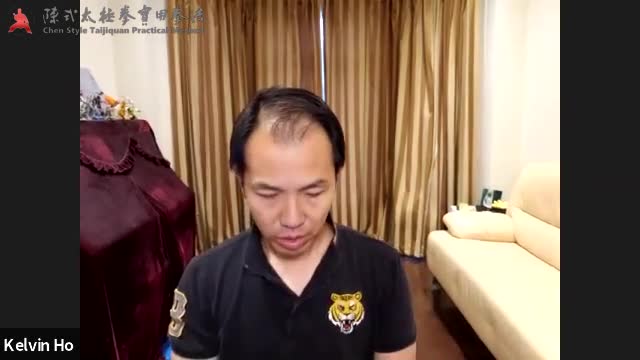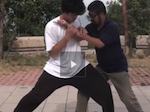
Presenter: Kelvin Ho Length: 71 mins Difficulty: 3/5 Language: English
Year: 2021 Location: Toronto, Canada
This class covers:
- Initial Closing's different variations:
- Lock the back, in with elbow, pull in left foot
- In with elbow, fill the kua
- In with elbow, out with foot
- Lock the top, move the bottom (rear foot backwards)
- How to train the front kua in fetch water?
- How to switch the direction of the half horse stance?
- How to rotate with a vertical rod?
- How to maintain a vertical and horizontal dimention?



{ 1 comment… read it below or add one }
Yilu Correction
16/7/21
Initial Closing
1. Elbows in can be done various ways:
a. In the form
i. Left foot back, left elbow in
1. Left hand must line up with rear right foot
2. Both arms on the same line, going through Dan Dien to rear foot
a. Both arms on a line as close to body vertical centerline as possible
3. Set back like a wall so there is no backward movement
a. The wall is established by stretching the vertical axis between head and rear foot
i. Head up, look straight forward, pull chin back
ii. Shoulders down
iii. Front kua up, can use a balanced forward thrust
iv. Practice arm movement alone first
4. The pull is a jerk movement, in with elbow, pulling opponent into the wall to hit your stationary fists
5. The setting of the wall, vertical and pulling in with elbow are two separate movements that must happen simultaneously yet separately in the sense that one movement does not bleed into the other. The more you can establish and maintain this separation of movements, the greater your ability
b. Another way: move forward as elbow comes in
i. Front Kua move forward, creates split with elbow in
c. Another way: Rear foot steps back
i. Upper body locked, engaged with opponent.
ii. Rear foot step back, pulling upper body and opponent
d. Common element to all three ways: something moving, something not moving
e. Another way: after elbows in, hands out foot in
i. Push hand technique to pull in with elbow, hook with leg and push out with hands
Fetch Water
1. Left Kua pushes straight out, do not move left knee
2. Shoulder movement is proportionally smaller than kua movement
3. Top body movement smaller than bottom body movement
4. Corners need to smoothed out: lock 2 ends, push down middle, then energy can flow through
Switching
1. Maintain central axis
2. Pivot on toes, move heel
3. Using Kua: Kelvin demo @ approx. 45 minute
Elbow Strike
1. Kick, foot down
2. Turn must have vertical axis
a. high rotation speed required to maintain vertical axis
b. Head up: Kelvin Demo approx. 54 min.
c. Right Knee into left socket
d. Both feet flat on floor
How to stand on one leg
1. Bend leg like a bow
2. Kua over heel
3. Knee push back to line between Kua and heel
4. No muscles, like sitting on a stool
5. After White Crane, arm movements should not affect torso or vertical rod
a. Separation of Arms and Torso is key
i. Use vertical stretch to maintain separation when power is applied
ii. Torso cannot follow arm
iii. This is example of yin yang separation
iv. Concept “ non flowing water” : throwing water out of a bucket, inertia, separation, river water flowing around a stone, wrapped around. You only see power of water if there is something not moving with water, fixed rock versus floating log
v. Power manifests when there is a differential. A split
vi. Wuji (flowing river) + rock= tai chi (yin yang)
vii. Lever need pivot point